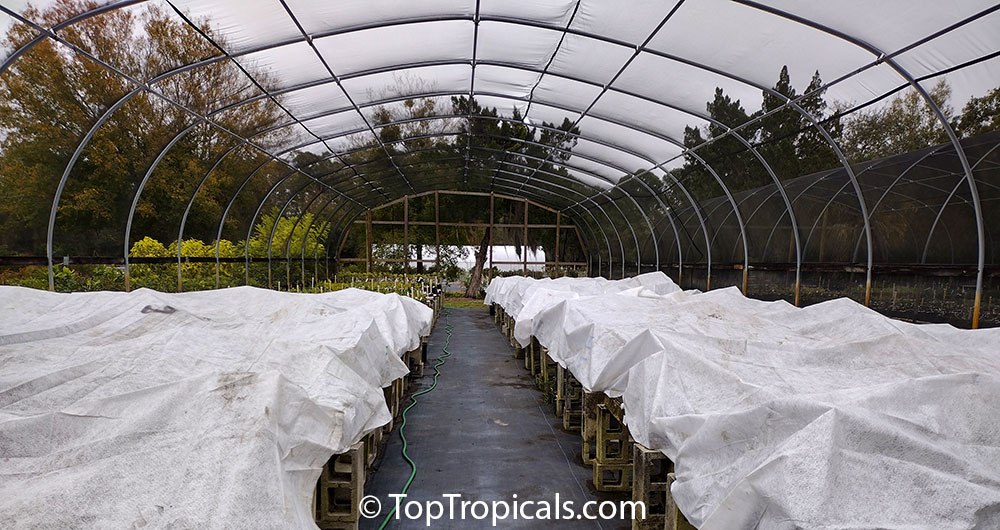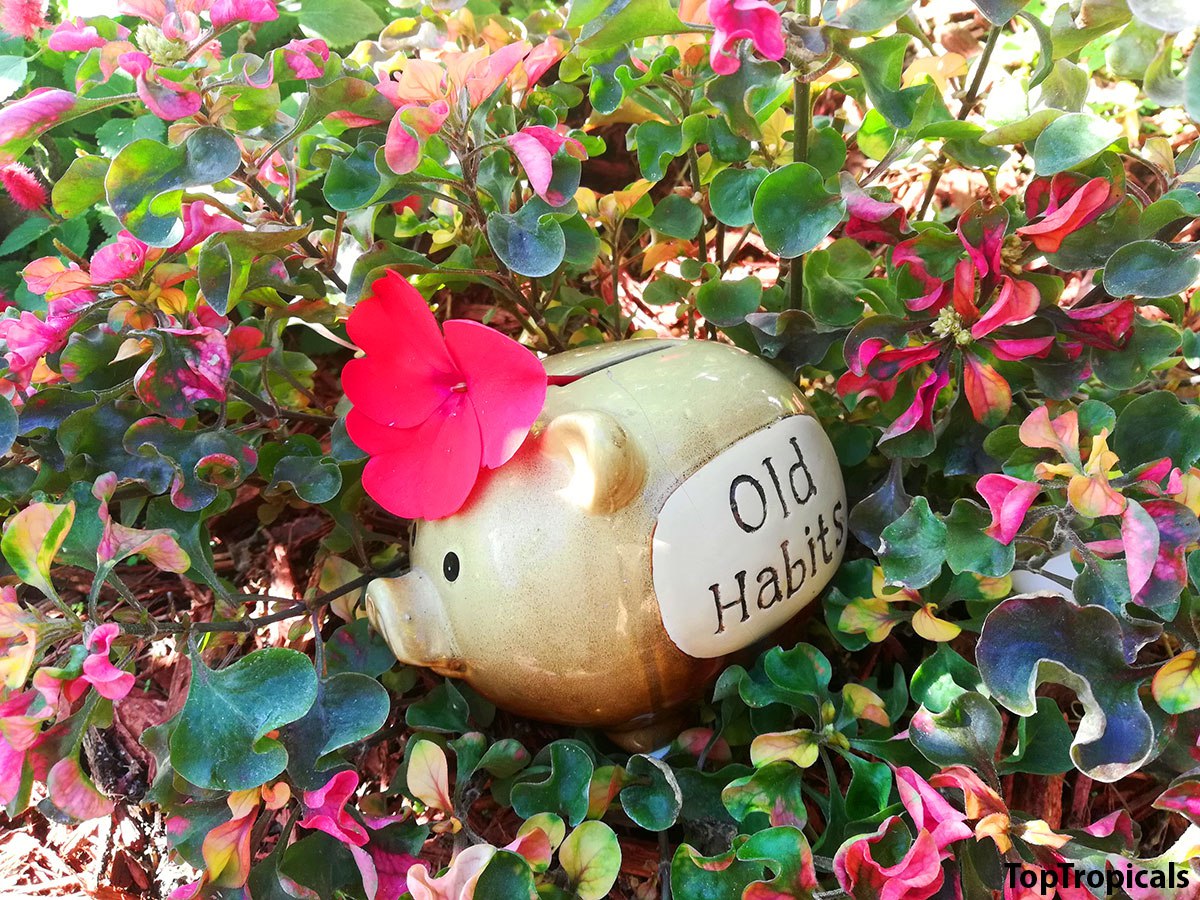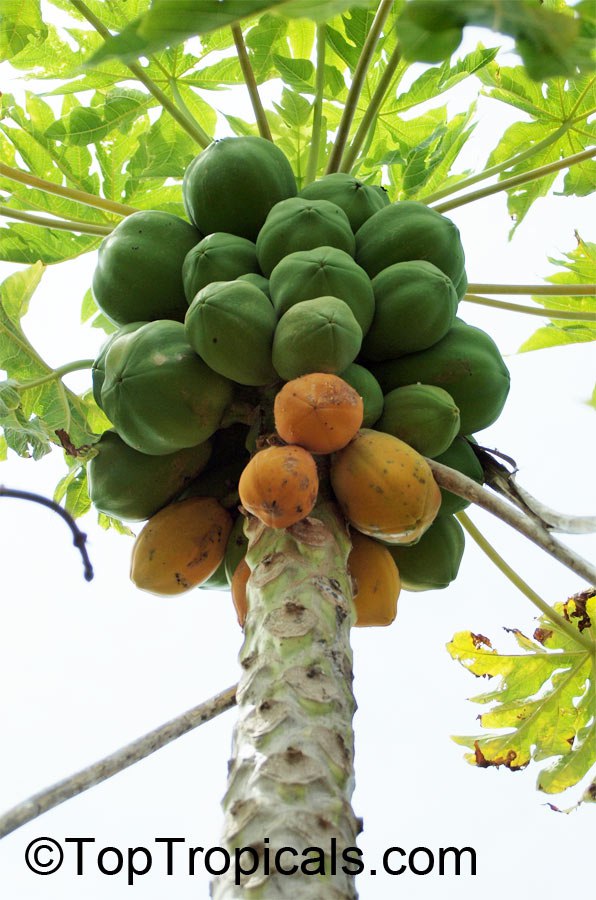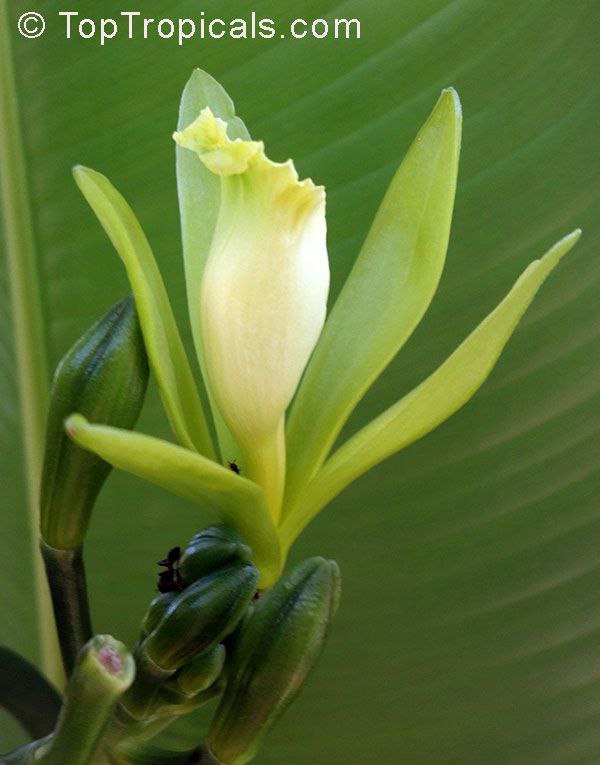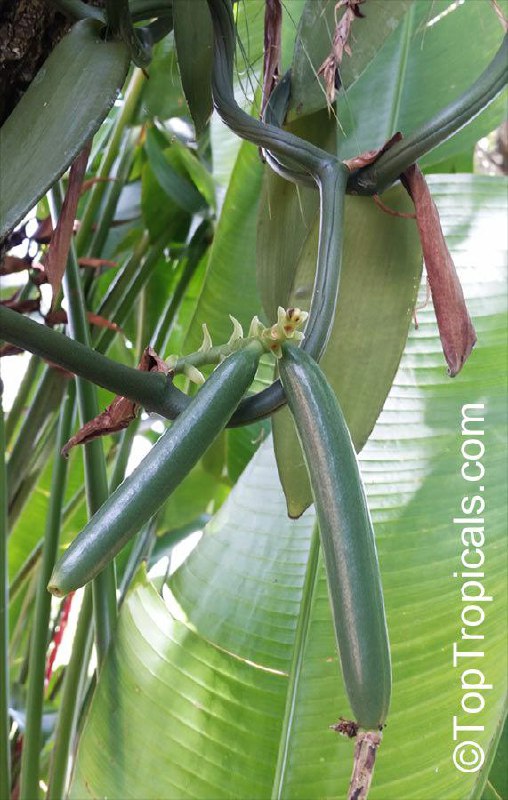Garden Blog - Top Tropicals
Why my Lychee tree is not producing fruit and why I cant grow a Lychee tree from a seed?
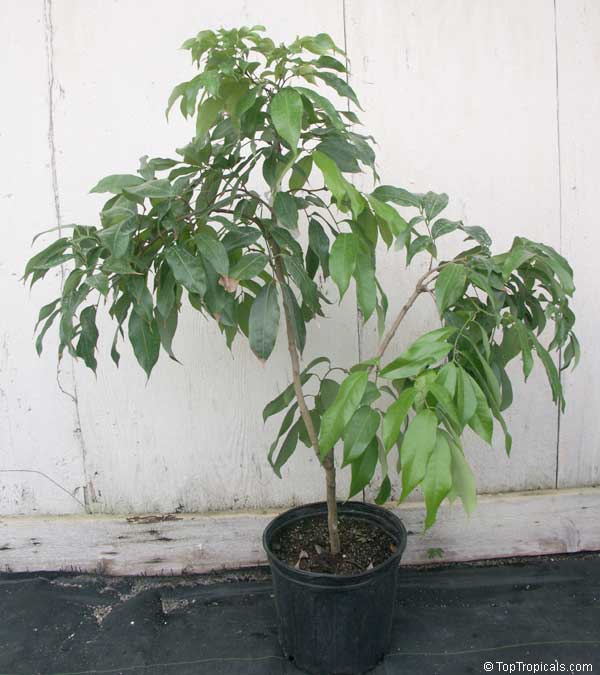
Lychee tree in a pot, Litchi chinensis
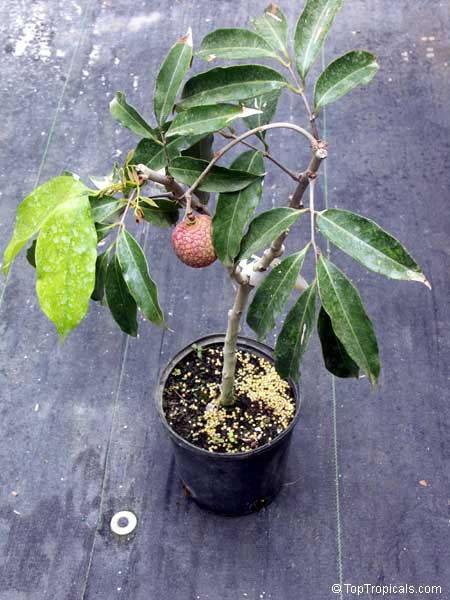
Lychee tree in a pot with fruit, Litchi chinensis
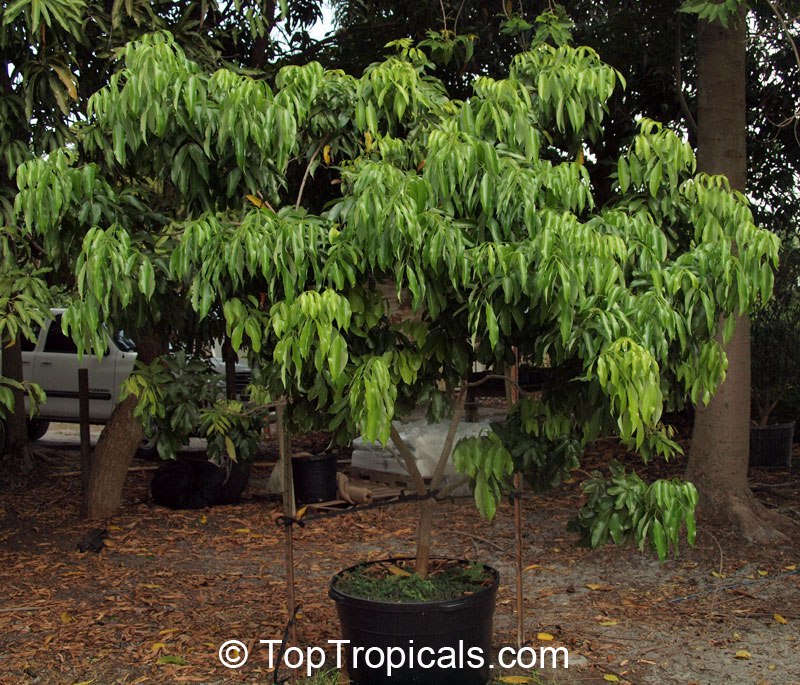
Lychee tree in a pot, Litchi chinensis
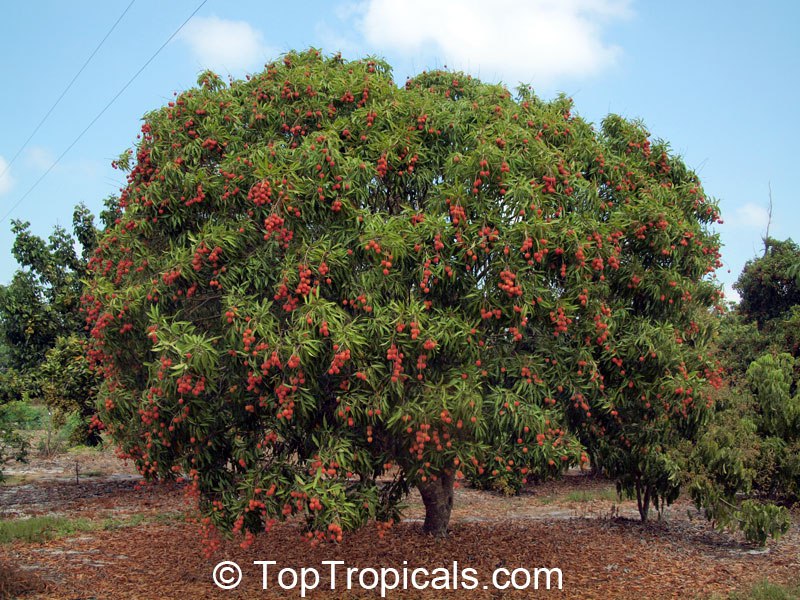
Lychee tree, Litchi chinensis
Practical advice on propagation and harvest- for the previous post 👆
- 🍑 Propagation and mycorrhiza
- 💋 Mycorrhiza is a symbiotic relationship between a fungus and plant roots. In a Lychee orchard, mycorrhiza plays a crucial role by enhancing the nutrient uptake of lychee trees, particularly phosphorus, leading to better growth and fruit production, especially in soils with low phosphorus availability.
- 💋Lychee trees are typically propagated by air layering, as they cannot be propagated effectively by seeds or grafting.
- 💋Lychee seedlings do not grow well because they require a special mycorrhizal environment that, in nature, is only provided under a mature mother tree. This dependency on mycorrhiza explains why lychee seedlings lack vigor and cannot serve as rootstocks for grafting.
- 💋If you have tried growing lychee from seed, you may have noticed that the seedling, after reaching a few inches in height, often stops growing or even shows signs of retarded growth. This is a clear indication of a lack of mycorrhiza.
- 💋The easiest way to have a healthy, productive Lychee tree, is to obtain a quality, air-layered tree from a reputable source.
🍑 Alternate Bearing in Lychee Trees
- 💋 Lychee trees often produce fruit every other year due to "alternate bearing", where the tree focuses on a heavy crop one year, leaving less energy for fruiting the next.
- 💋This cycle is influenced by weather, tree variety, and how flower buds develop alongside the current year's fruit. For example, "Mauritius" trees may bear fruit annually, while "Brewster" trees may produce a good crop only every 3-4 years.
By considering these factors and providing appropriate care, you can enjoy the beauty and bounty of a lychee tree in your garden.
📚 Learn more from previous posts:
The best varieties of Lychee
The best fruit in the world - grow your own Lychee tree
How to grow a Lychee tree
🛒 Shop Lychee trees
#Food_Forest #How_to
🔴 Join 👉 TopTropicals
How to grow a Lychee tree and have a reliable crop

Lychee fruit on a tree, Litchi chinensis
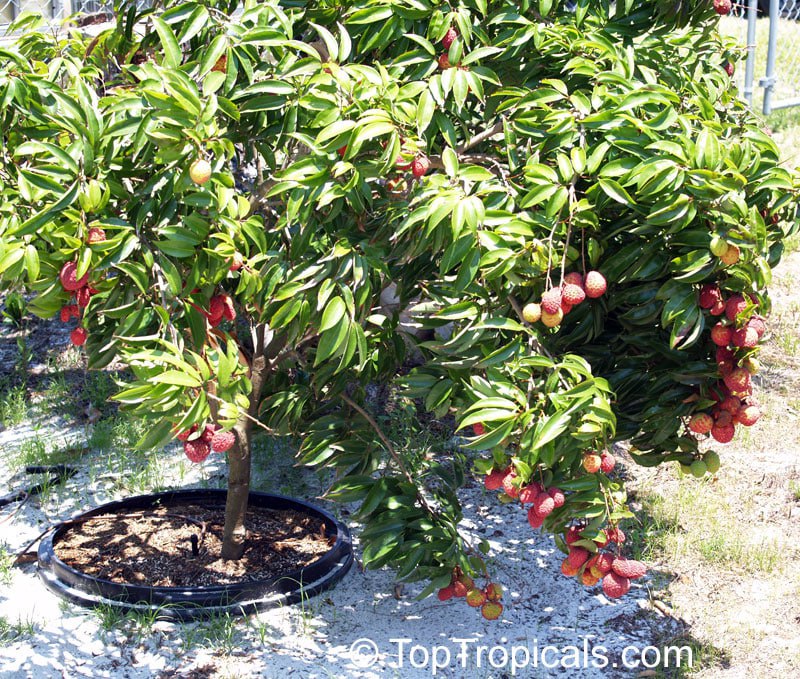
Lychee tree in a pot with fruit, Litchi chinensis
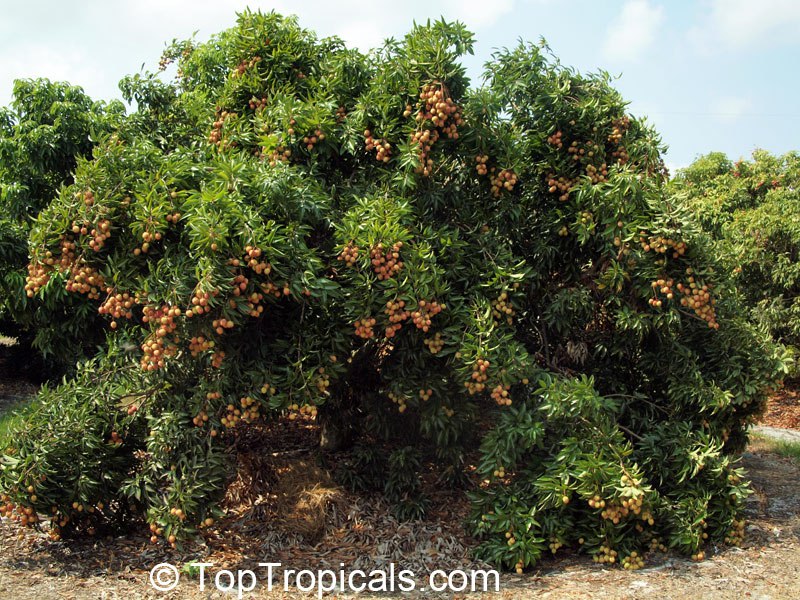
Lychee tree with fruit, Litchi chinensis
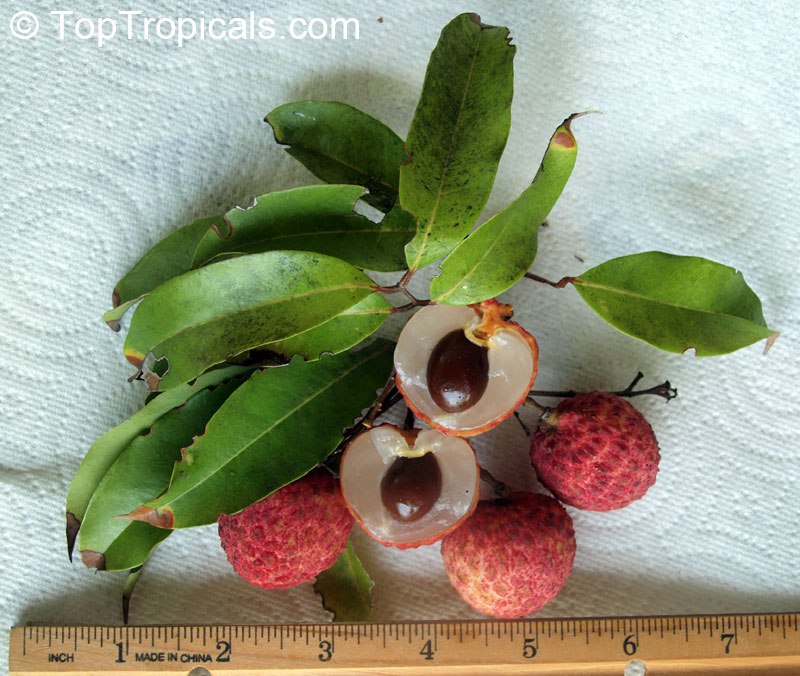
Lychee fruit, Litchi chinensis
- 🍑 Lychee (Litchi chinensis) is a tropical evergreen tree renowned for its delicious, aromatic fruit. Native to southern China, lychee trees can reach heights of up to 40 feet and are prized for their attractive foliage and bountiful fruit clusters.
- 🍑 Important factors to consider when planting a Lychee tree
- 💋Climate: Lychee trees thrive in tropical and subtropical climates with warm, humid summers and cool, dry winters. They require a period of winter chilling (100-200 hours between 32F and 45F) to induce flowering. Mature trees can tolerate temperatures as low as 25F, but young trees are susceptible to frost damage.
- 💋Sunlight: Plant lychee trees in full sun to ensure vigorous growth and optimal fruit production. They require at least six to eight hours of direct sunlight daily.
- 💋Soil: Well-drained, slightly acidic soils rich in organic matter are ideal. Avoid heavy clay soils or areas prone to waterlogging, as lychee trees are susceptible to root rot.
- 💋Spacing: Ensure adequate space for the tree's mature size by planting at least 20 feet away from other trees or structures.
- 🍑 When and how do you harvest lychee fruit?
- 💋Lychee trees typically begin to produce reliably after 3-5 years, with the fruit ripening in early summer.
- 💋Timing: Wait until the fruit's skin turns bright red or pink, indicating full ripeness. Lychees do not ripen off the tree, so it's essential to harvest at the right time.
- 💋Method: Use pruning shears to cut entire clusters, leaving a short stem attached to each fruit to prolong freshness. Handle the fruit gently to avoid bruising.
- 💋Post-Harvest: Consume fresh lychees within a few days or store them in the refrigerator to extend shelf life. The skin may darken when refrigerated, but the fruit's quality remains unaffected.
- 🍑 How to grow a Lychee tree?
- 💋Watering: Provide consistent moisture, especially during dry periods. However, avoid overwatering, as lychee trees are sensitive to waterlogged conditions. Mulching around the base helps retain moisture and regulate soil temperature.
- 💋Fertilization: Apply a balanced fertilizer during the growing season to support healthy growth and fruit development. Avoid excessive nitrogen, which can inhibit flowering. Sunshine Boosters C-Cibus - natural liquid fertilizer - is the best choice, and is safe to use with every watering year around.
- 💋Pruning: Minimal pruning is required. Remove dead or diseased branches and shape the tree to maintain its structure. Pruning after harvest can encourage new growth.
🍑 More practical advice on propagation and harvest in next post 👇
🛒 Shop Lychee trees
#Food_Forest #How_to
🔴 Join 👉 TopTropicals
How to protect tropical plants in Winter
- Winter Care Tips for Tropical Plants
- · Cut watering: Reduce watering to prevent root rot. Cold + wet = dead roots.
- · Water before frost: Thirsty plants are more vulnerable. Water them before a cold night to prevent damage.
- · Wind protection: Wind is more harmful than temperature drops. Plant near structures like houses or trees for shelter.
- · Prepare for long cold periods: If cold weather lasts for hours, use all available protection, including Christmas lights and propane heaters.
- · Don't use dry fertilizer in winter: Heavy fertilizing encourages tender growth, which is more susceptible to cold damage. Sunshine Boosters liquid fertilizers are safe to use year around as their intake is controlled by reduced watering.
- · Use fabric covers, not plastic: Plastic can cook plants in the sun, while fabric allows better ventilation.
- Prepare for Cold Nights:
- · Wrap plants: On cold nights, cover individual plants or trees with sheets or blankets to shield them from wind chill.
- · Use Christmas lights: A simple string of lights can add extra warmth, protecting your plants during frosty nights.
- · Use propane heaters: For added warmth in a larger area, place a propane heater near your plants. Make sure to follow safety guidelines and keep the heater at a safe distance from flammable materials. This can help maintain a few extra degrees of warmth, especially in more open garden spaces or temporary greenhouses. Always ensure proper ventilation to avoid harmful gas buildup.
- · Affordable winter greenhouse: For large plant collections, you don't need an expensive greenhouse. A mobile carport with plastic or fabric covering, costing around $200, can house up to 100 plants!
- Key Factors for Survival:
- · Cold duration: Tropical plants can survive brief cold spells but long durations, even above freezing, can be deadly.
- · Wind-chill: Wind chill can be harsher than the temperature itself.
- · Exposure: Southern-facing slopes hold heat longer, making them ideal for your plants.
- · Humidity: Proximity to lakes or oceans can create a milder micro-climate.
- · Gradual temperature Drops are safer. Plants adjust better to slow temperature changes than sudden cold blasts. Gradual cooling allows plants to prepare, reducing the risk of damage.
Strengthen Plant Hardiness:
· Health and maturity: Well-established, healthy plants are more cold-hardy.- · Boost plant immunity: Use products like SUNSHINE-Epi to improve cold resistance. Apply it before and during cold snaps to protect your plants.
- · Healthy plant is hardy. Make sure to fertilize your plants on regular basis - healthier and stronger plants are more cold hardy
#How_to
🔴 Join 👉 TopTropicals
New Year with New Plants: how to choose from 17 Tropical Paradise Resolutions
✍️ "A garden is never so good as it will be next year..." - Thomas Cooper.
⚡️ As we step into a fresh new year, it's the perfect time to think about what exciting, special, and life-changing plants we can add to our gardens. The days are getting longer, and spring is just around the corner, so now's the time to make a plan and prepare for the season ahead. Let's take small steps each year to create the garden of our dreams. This winter, consider these fun resolutions:
💋Hang a bird feeder and install a rain barrel- 💋Order some tropical plant seeds for an early start
- 💋Ask your grandparents about their favorite garden plants
- 💋Build a raised bed for succulents
- 💋Plant a fruit tree or two to have some crop this year
- 💋Start a compost pile
- 💋Switch to organic fertilizers and plant boosters
- 💋Fill empty spaces with flowering trees, shrubs, and vines
- 💋Add butterfly attractors to your garden
- 💋Provide water for bees and butterflies to help them thrive and pollinate your fruit trees
- 💋Get a bonsai starter to try bonsai art
- 💋Enjoy meals outside as often as you can
- 💋Teach a child how to plant a tree
- 💋Plant berry-bearing shrubs like Tropical Cherries to feed the birds
- 💋Rake up leaves for winter mulch
- 💋Add a few exotic plants to your indoor collection or container garden
- 💋Share plants as gifts all year long
- 🚩🚩🚩🚩 Happy gardening in 2025!
#How_to #Quotes
🔴 Join 👉 TopTropicals
How to eat a papaya?
😂 Cut it open, scoop out the seeds (they're not part of the fun), peel off the skin, and chop it up. Now enjoy the tropical sweetness – no passport required!
🎥 Or, if you are desperate and have no time for prep – do it like Cash in the video!
📚More from previous posts:
Why do we love Papaya?
How easy to grow is Papaya tree?
Top 10 fruit you'll ever need for your health benefits: #4 Papaya
Top 10 fast-fruiting trees: #6. Papaya
How to have fresh Papaya fruit year around
Top 3 most wanted Papaya varieties
The truth about Papaya
Papayas contain a secret enzyme
🛒 Shop Papaya trees
#Food_Forest #PeopleCats #How_to #Papaya
🔴 Join 👉 TopTropicals

